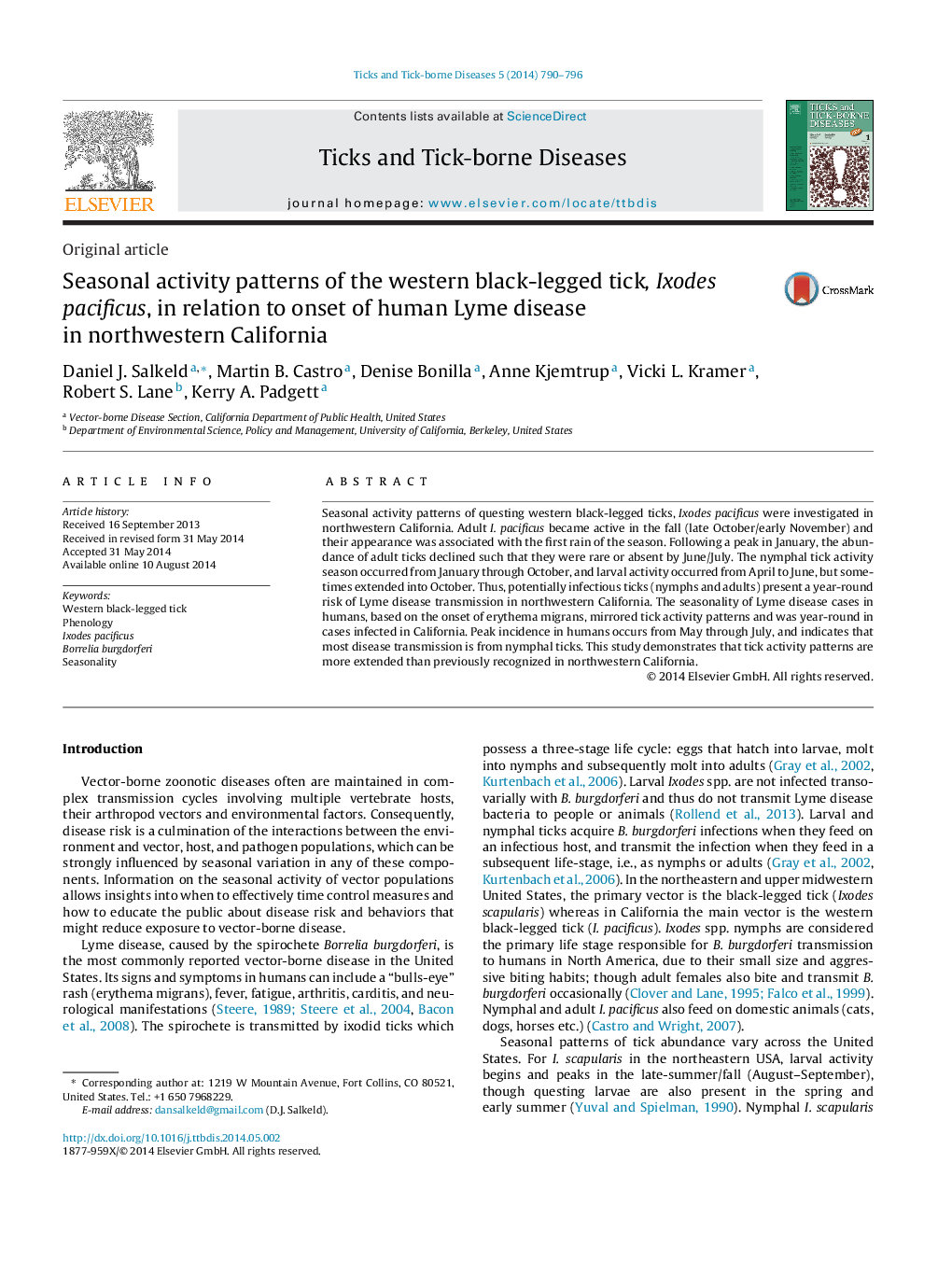| Article ID | Journal | Published Year | Pages | File Type |
|---|---|---|---|---|
| 2473987 | Ticks and Tick-borne Diseases | 2014 | 7 Pages |
Seasonal activity patterns of questing western black-legged ticks, Ixodes pacificus were investigated in northwestern California. Adult I. pacificus became active in the fall (late October/early November) and their appearance was associated with the first rain of the season. Following a peak in January, the abundance of adult ticks declined such that they were rare or absent by June/July. The nymphal tick activity season occurred from January through October, and larval activity occurred from April to June, but sometimes extended into October. Thus, potentially infectious ticks (nymphs and adults) present a year-round risk of Lyme disease transmission in northwestern California. The seasonality of Lyme disease cases in humans, based on the onset of erythema migrans, mirrored tick activity patterns and was year-round in cases infected in California. Peak incidence in humans occurs from May through July, and indicates that most disease transmission is from nymphal ticks. This study demonstrates that tick activity patterns are more extended than previously recognized in northwestern California.
